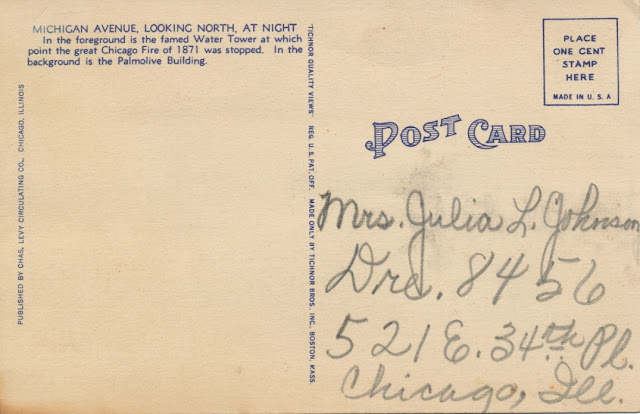If you'd like to explore the Land of Lincoln, I suggest the Southern View Motel in Springfield, Illinois. I'm not sure what you'll see in that southern view, but there's plenty of parking.
As you head up north from Illinois, you may want to stay at Krueger's Motel in Milwaukee, Wisconsin. The motel manager, Freddy Krueger, seems very outgoing and energetic.
As you can see by the back of the first card, there are deals to be had. The card wasn't even mailed. I think it was just a note to remind the person what a good deal they got.
Stayed here Wed. nite July 25th 1962. $12 for the 6 of us. Supposed to be a 20 room.
Here are the backs of the other two cards:














































